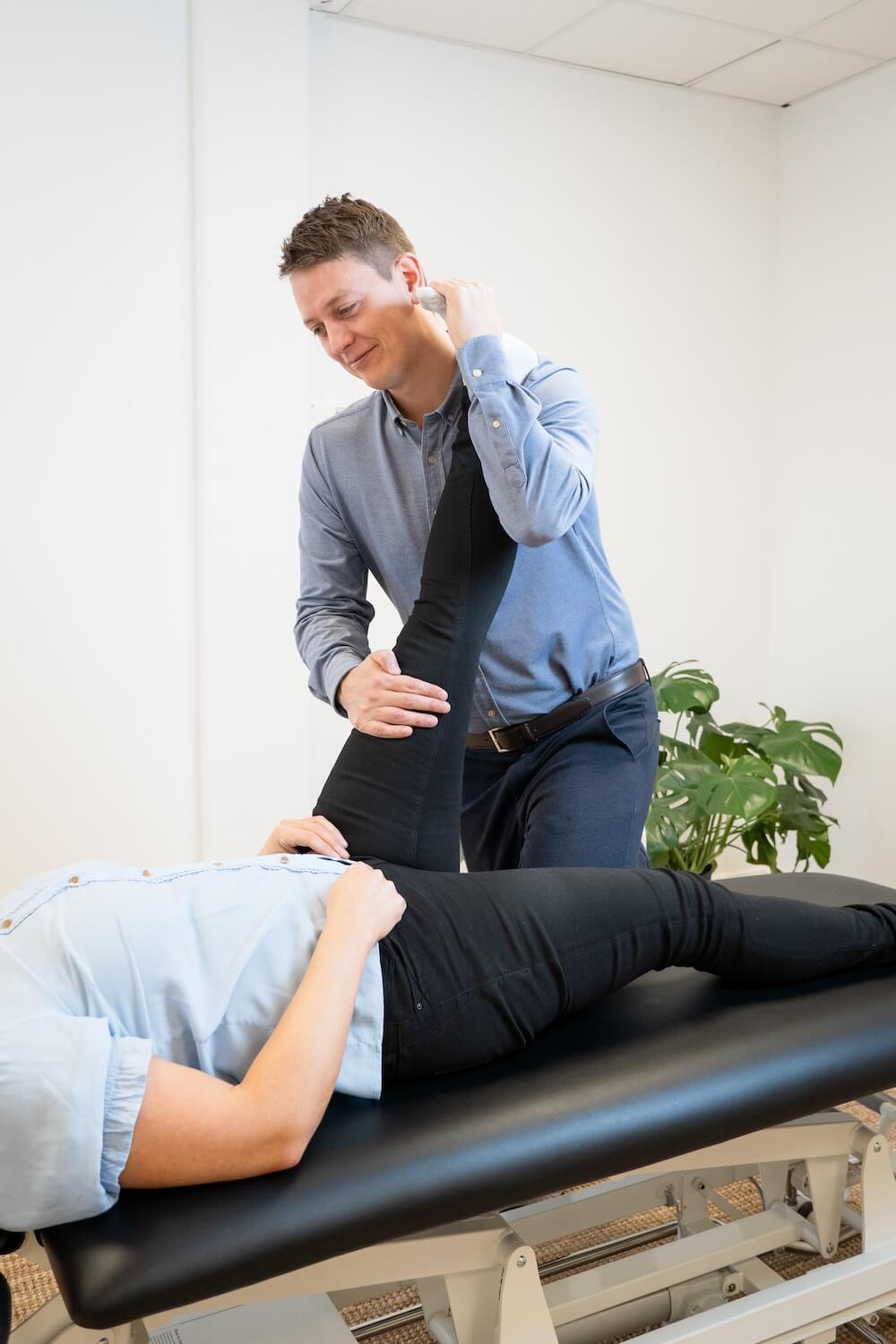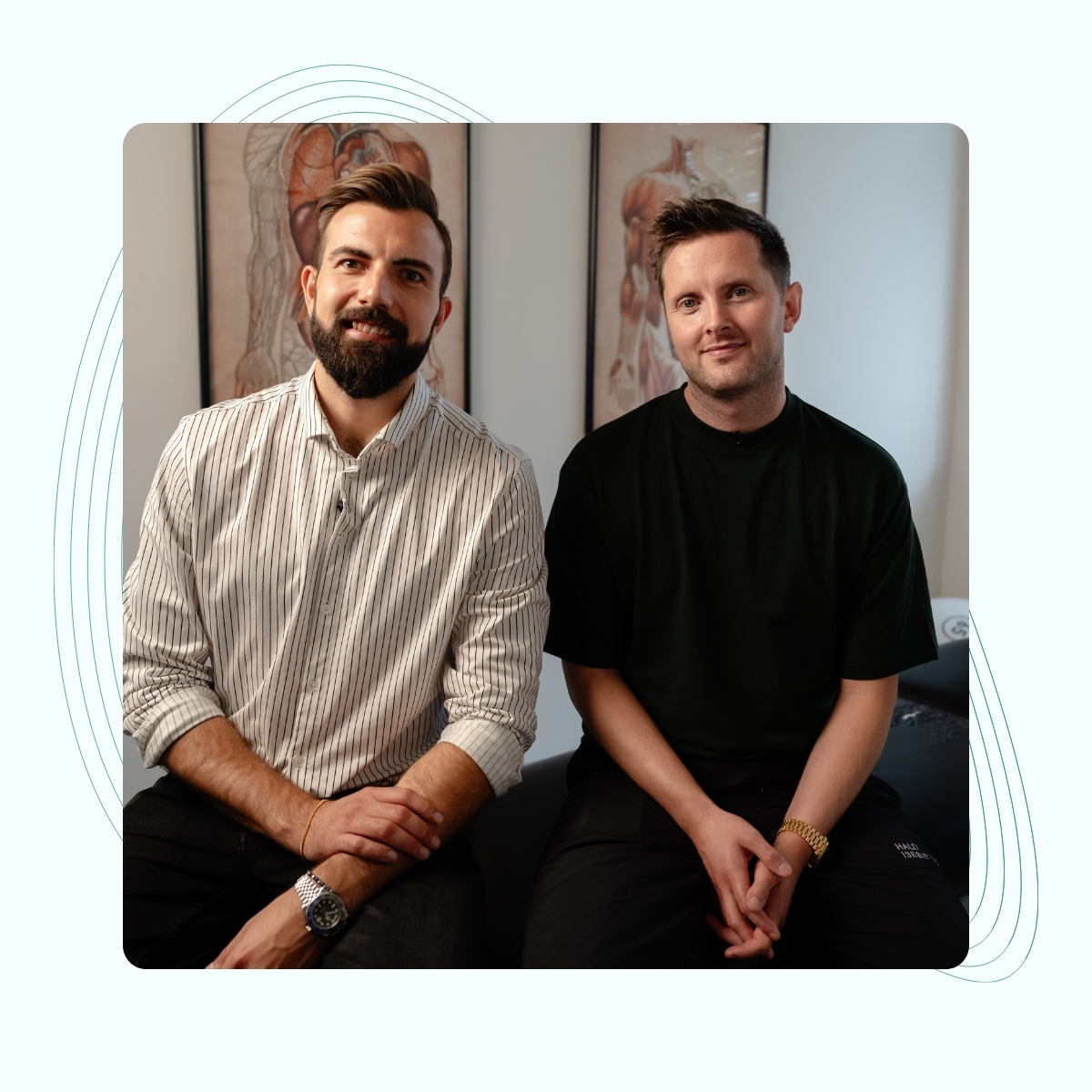We treat
Heel spur - Fasciitis plantaris
Learn more about heel spurs on this subpage.
Is it heel spurs?
Foot and ankle problems are relatively common, meaning a large proportion of people will have experienced an issue of some kind at some point. The foot and ankel problems vary from ligament and tendon injuries to Achilles tendonitis, sprains and heel spurs and they especially occur in sports.
Jump to section [Vis]
What is plantar fasciitis?
Heel spurs are an inflammatory condition (plantar fasciitis) in and around the tendons that attach to the heel under the foot or an inflammatory condition in the bone itself. However, this is not a heel spur but an inflammatory condition caused by calcification of the tendon/bone itself. The irritation (inflammation) can also originate from the entire plantar fascia (fascia plantaris).
The tendon is strong and has the function of maintaining the arch of the foot and supporting walking. Therefore, heel spurs can often be felt especially during walking and running.
What is an arch tendon?
The arch tendon or fascia plantaris is a wide tendon that connects the forefoot with the heel. The tendon, like all other tendon tissue, is built from strong collagen tissue that has great mechanical efficiency. This tendon functions as the floor for all the foot muscles so that the muscles are held tightly in place. The tendon also helps to lift the arch of the foot upwards so that the foot forms the arch.
The plantar fascia, together with the Achilles tendon, is important for the biomechanics of the foot as it utilizes and transmits large amounts of elastic energy when walking and running, thus allowing the body to save on muscle work that requires a lot more energy. This allows us to walk and run further.
Heel spurs and children
Children can get heel spurs just like us adults, but heel spurs in children can be difficult to spot and diagnose correctly. Children cannot always explain exactly when they are in pain and where the pain is located. Parents should pay attention to whether they limp, or if they walk differently, especially when they get up from a sitting position, does the discomfort occur most when they do activities that require quick movements like jumping or running, and are the complaints worst in the morning and afternoon/evening. If so, there is a high probability that the discomfort stems from heel spurs or other problems with the foot.
Heel Spur
Many people experience discomfort under the heel – especially during the first steps in the morning or after resting.

Heel spur symptoms
To start with, the symptoms are weak and mild. You may experience starting pain in the morning and if the foot has been still and cold for a long time (the start-up phase). Gradually, the symptoms develop where the pain gets worse and worse and also occur during activity (the development phase). In severe cases of heel spurs, there is also rest pain after loading the foot, where the problems usually become worst in the evening.
Heel spurs and de-loading
During heel spurs, there is inflammation to be found in and around the heel. De-loading is always necessary to relieve inflammation as tissue is relieved, the immune system has the opportunity to repair the damage in the area. However, de-loading is not the only thing that should be used for heel spurs. There is always another underlying cause one or more places in the body that must be dealt with first or along the way.
If this is not solved, the heel spur becomes a persistent problem that occasionally occurs.
In addition, de-loading must be combined with specialist-guided re-loading of the structures that are important for the heel. This is where correct form and training dosage come into play.
Causes of heel spurs
The causes of heel spurs (plantar fasciitis) are many and varied. There is never one reason that causes this condition. Below you can read about some of the causal relationships that can be the cause of the irritation in the arch of the foot (heel spur).
Misalignments of the foot and tarsus as causes of heel spurs
The arch tendon (fascia plantaris) must support the arch itself and the bones that form the arch. Locking and malpositions in the plantar bones, such as flat feet, sunken forefoot, etc., lead to increased strain on the tendon itself, which increases the risk of developing inflammation in the tendons.
Overuse and heel spurs
Overuse of the arch tendon is always involved in the development of heel spurs. When the tendons’ breaking point is exceeded with a large amount of training, inflammation will occur in the arch tendon. Repetitive inflammation contributes to calcification of in the tendon itself.
Back pain and sciatica as predisposing factors for heel spurs
From the back at L4-S3, the spinal nerves that form the sciatic nerve emerge. Impact on these nerve roots in the spine, for example, by a disc bulge or herniated discs, can reduce the nerve signal, thus weakening muscle strength and the strength of the tendons. This is an ideal condition for the development of heel spurs.
Irritation of the sciatic nerve in the buttock, in the hamstring, in the back of the knee or in the calf muscles, can irritate the nerve and increase the signal from the sciatic nerve. This will increase the tension (tonus) in the muscles that for the arch tendon, causing persistent strain on the tendon and tendon attachment.
Other foot problems can be the cause of heel spurs
Problems such as previous ankle sprains, Achilles tendonitis, and unstable ankles can contribute to the development of heel spurs.
Poor blood supply to the leg/foot and heel spurs
Structural problems in the arteries supplying the foot, for example, atherosclerosis, phlebitis or similar can reduce the blood supply to the area. This will also happen with overactivation of the sympathetic nervous system (autonomic nervous system) of the smooth muscles in the arteries. Problems with the lower back and pelvis can be causes of this. Poor venous return can also create a non optimal chemical condition in the area and increase pressure in the area due to fluid accumulation.
Metabolism and calcium formation in the arch tendon
The thyroid gland (parathyroid hormone PTH) regulates calcium concentration in the blood by absorption in the small intestine, kidneys and bones. Calcium concentration in the blood is important for the development of heel spurs.
Digestion can contribute to the development of heel spurs
Digestion and gastrointestinal problems – Problems with the small intestine such as leaky gut or damage to the mucous membranes of the small intestine, such as Crohn’s disease.
The kidneys and inflammation in the heel
Kidney problems – Along with digestion and the thyroid gland, regulates the calcium concentration in the blood. Repeated inflammation in the area – This will increase calcification of the tendons that attach to the heel bone.
Good exercises for heel spurs
These exercises are very effective against heel spurs. The first video shows exercises that increase blood circulation down to the arch and foot, exercises that stretch the calf muscles and exercises that strengthen the tendon itself. The next video shows neuromanipulation of the sciatic nerve with the aim of normalizing the nerve impulses down to the calf and foot muscles.

Good advice for heel spurs
There are different types of advice for heel spurs. What matters in terms of advice is the severity of the heel spur.
Heel Spur “The Initial Phase”
If the problem is in the initial phase (see symptoms), then the training activity should be reduced to a moderate amount of training. It is also a good idea to consider footwear, be careful not to wear high-heeled shoes or shoes that have a hard and firm bottom. Rest and good sleep should also be prioritized. In this phase, it may be considered to seek out a professional treatment (osteopath, physiotherapist or masseuse).
Heel Spur “Development Phase”
In this phase, the problem is not only in the morning or at the start of a movement, but also during various activities such as walking, climbing stairs, running, etc. Here, training activity must be drastically reduced and it is recommended to start special rehabilitation for heel spurs (see the section on good exercises for heel spurs). Shoes with soft soles or shoe inserts that support the arch can be used here. Rest, relief and sleep are very important here. In this phase, a professional therapist (osteopath, physiotherapist or masseuse) should be consulted.
Heel Spur “Chronic Phase”
When the problem has become chronic, it is natural that certain types of exercise are not good. Only specialized rehabilitation of heel spurs should be carried out (see the section on good exercises for heel spurs). Shoes, sleep, relief and/or various aids (heel inserts, shoe inserts, tape, etc.) can be used. In this phase, a professional therapist (osteopath, physiotherapist or masseuse) must be consulted.
What can you do yourself to get rid of heel spurs?
De-loading
As we have written previously, de-loading is an important factor in healing heel spurs. De-loading must be combined with the right load in the form of training by a specialist in the field.
Ice and compression
Ice can be a good alternative after exercise or at the end of the day. Compression in the form of compression bandages or stockings is a better alternative while you are at work or during exercise..
Shoe insoles
Shoe insoles or the right footwear can reduce the load on the heel and, together with the right relief, treatment and exercise, alleviate heel spurs.
Tape
Taping in the same way as insoles in the shoe can relieve the loads that rest on the heel. However, this must be agreed with a physiotherapist how to tape the foot in the right way. In addition; training of the foot and heel, medication or blockade and as a last resort, surgery
Osteonordic and heel spurs
Osteonordic consists of multidisciplinary experts with different specialist areas. At the clinic, we diagnose and treat many cases of plantar fasciitis per week and help people along. We have therapists within osteopathy, physiotherapy, massage, acupuncture, etc.
When it comes to heel spurs, it is important to get to the bottom of the medical history, talk about everyday and work life, such as exercise level. Then we examine all the body’s systems, including the musculoskeletal, organ, circulatory, cranio sacral, nervous and hormonal systems, to find the real cause(s) of the heel spurs.

Osteopathy heals heel spurs
Osteopathy takes a holistic approach to the causal relationship that may be important for the development of heel spurs. For example, osteopathy treats the digestive and organ systems so that metabolism and metabolism function better, promotes blood supply to the foot to promote healing of the inflammatory condition, optimizes the nervous system so that the muscles and connective tissue relax, and osteopathy works with biomechanical problems in the lower back, pelvis and in the foot itself.
Physiotherapy and heel spurs
Physiotherapy is necessary for the healing of heel spurs. Specific rehabilitation such as eccentric strength of the calf and foot muscles is important for the treatment of heel spurs. At Osteonordic we have specialists in the treatment and investigation of the causes of heel spurs.
Recent research shows that heavy strength training and eccentric training of the foot and calf muscles are effective against heel spur pain.
Source: Rathleff MS, et al. High-load strength training improves outcome in patients with plantar fasciitis: A randomized controlled trial with 12-month follow-up. Scand J Med Sci Sports. 2015.
Acupuncture for heel spurs
Acupuncture can be used for heel spur symptoms and pain. Acupuncture stimulates meridians that are important for organs and circulation that are part of the body’s metabolism. Acupuncture can also relieve muscular tension in the muscles of the calf and foot.
Massage can help heal heel spurs
Massage increases blood flow in the treated area, helps with the transport of nutrients and the excretion of waste products. Massage can also soften local myoses and tension points in muscles and connective tissue. Here it is often good to loosen the plantar fascia itself.
Treatment of heel spurs
Optimal treatment of heel spurs should include manual therapy combined with exercise therapy and guidance on daily and sports activities. Causes of heel spurs must be addressed first, and then tissue loading and strengthening should be initiated. Along the way, guidance on exercise level, diet, and everyday activities should be included in the rehabilitation. Osteopathy, physiotherapy, massage, and acupuncture are all valuable treatments for heel spurs.
What else can be used for heel spurs – Tape – Shoes and footwear – Socks
Many people have good experiences with taping their feet, especially during foot rehabilitation. What taping can do is relieve the foot if the foot position itself is the problem. A specialist physiotherapist (physiotherapist specializing in heel spurs) can perform taping of the foot and guide you on how to do it yourself.
Shoes and footwear are also something that can relieve discomfort from heel spurs. However, it should be noted that shoes cannot eliminate the causes of heel spurs. Which shoes you should use individually should be up to a physiotherapist specialist in foot and heel problems.
Footwear with a soft bottom or shoe bottom that absorbs shock from the surface is useful against heel spurs and/or shoes that have a pronation or supination wedge if the foot position is not neutral.
Stockings usually do not do much for heel spurs, but for heel spurs that have circulatory causes, such as poor venous drainage of the foot and leg, stockings with a compression effect can be useful. They should be used especially when you are standing or sitting still or when you are active. They should be taken off in the evening and at night, but here it can be effective to have the legs slightly elevated above heart level.

Often related injuries
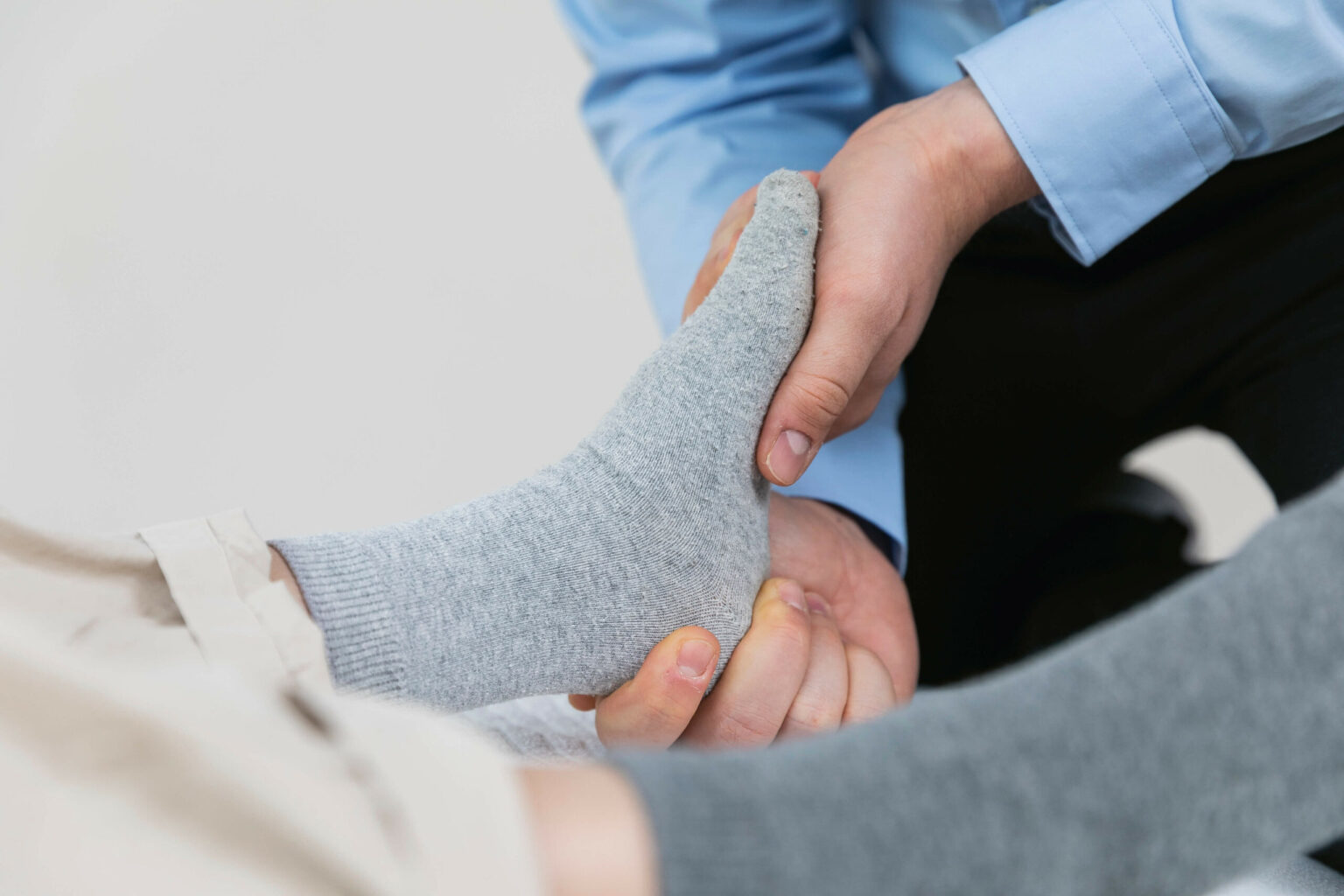
Tenosynovitis in the foot
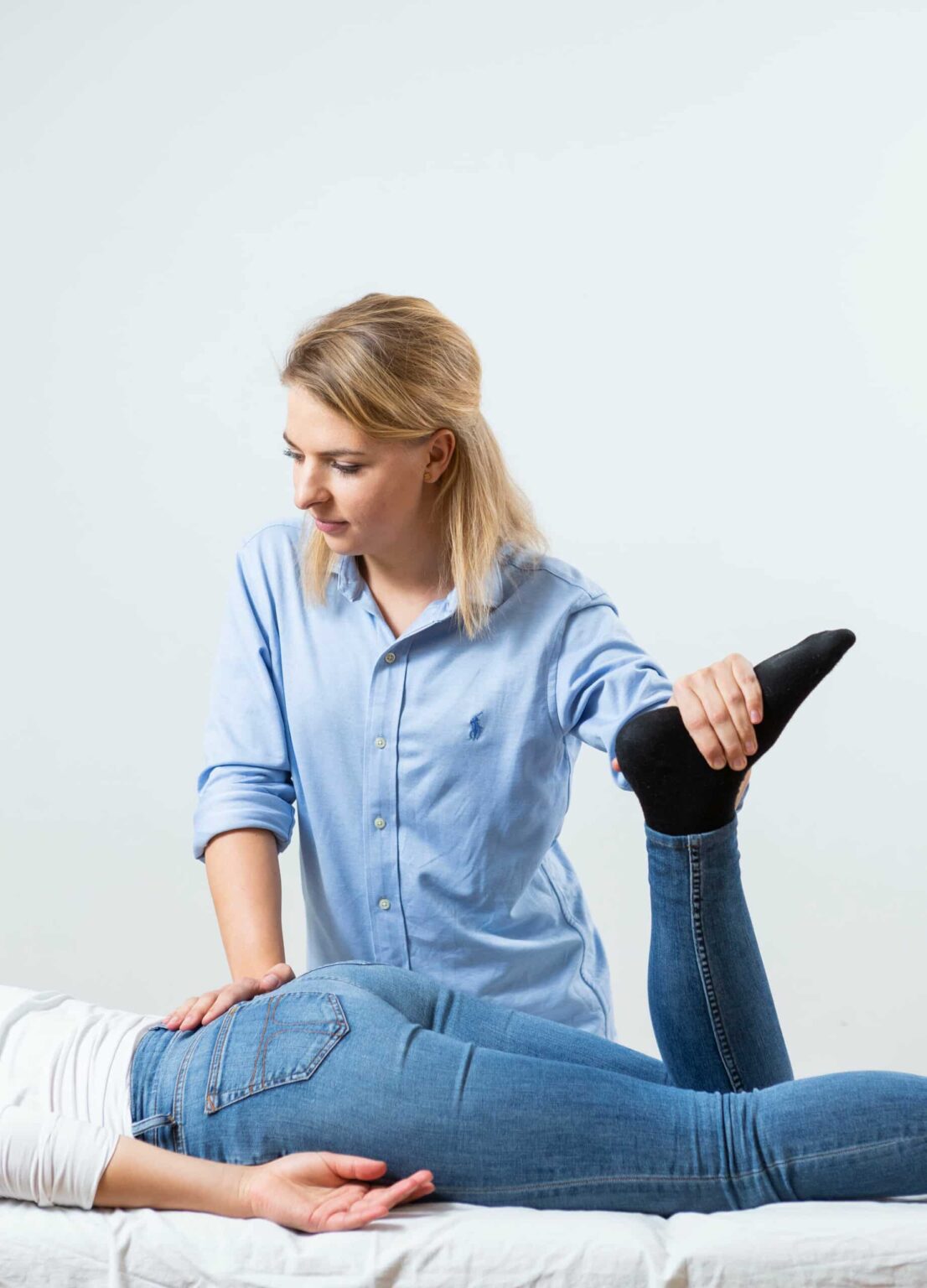
Swollen ankles

Sunken forefoot
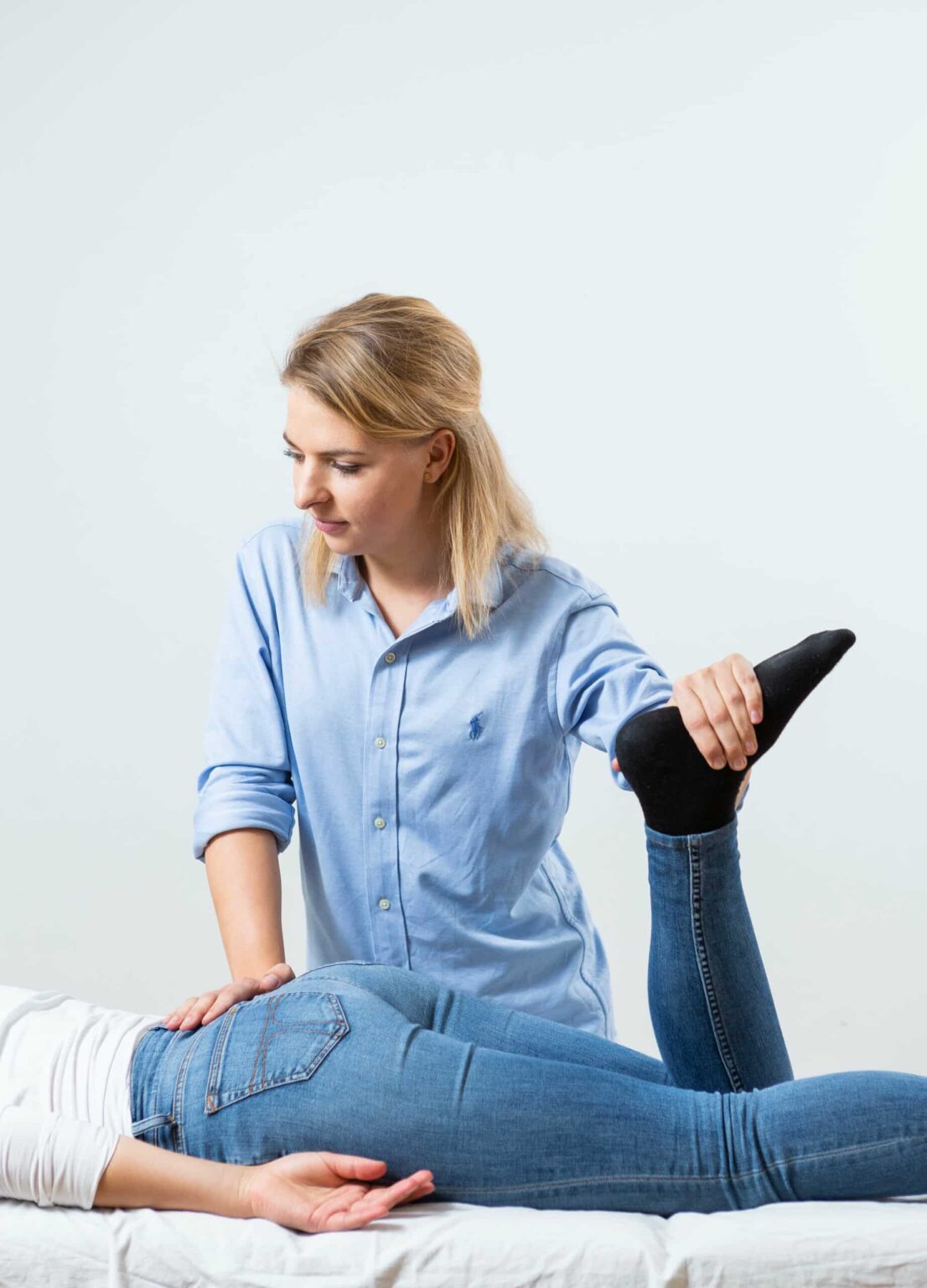
Flat Foot (Pes Valgus)
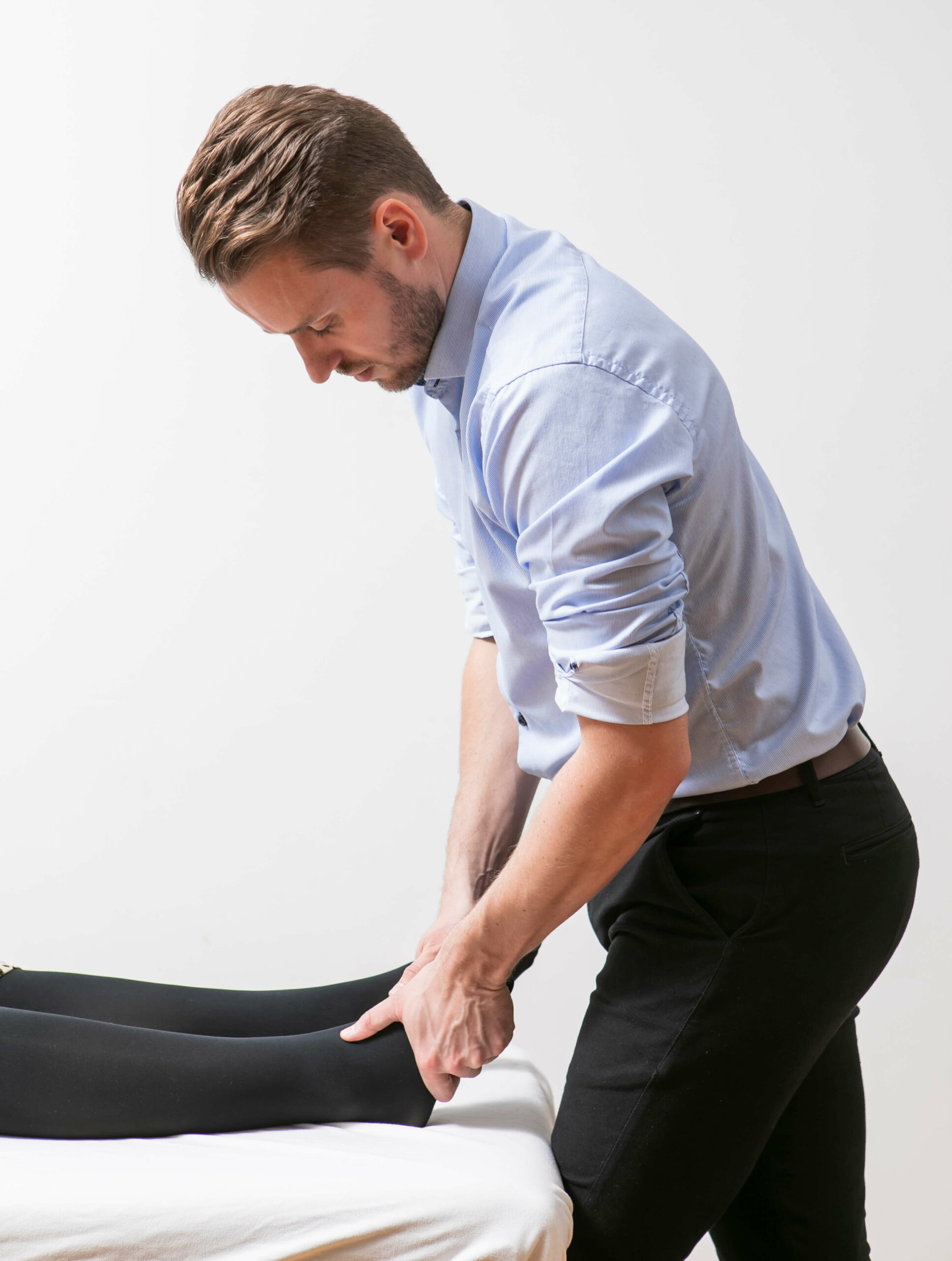
Ankle and foot pain
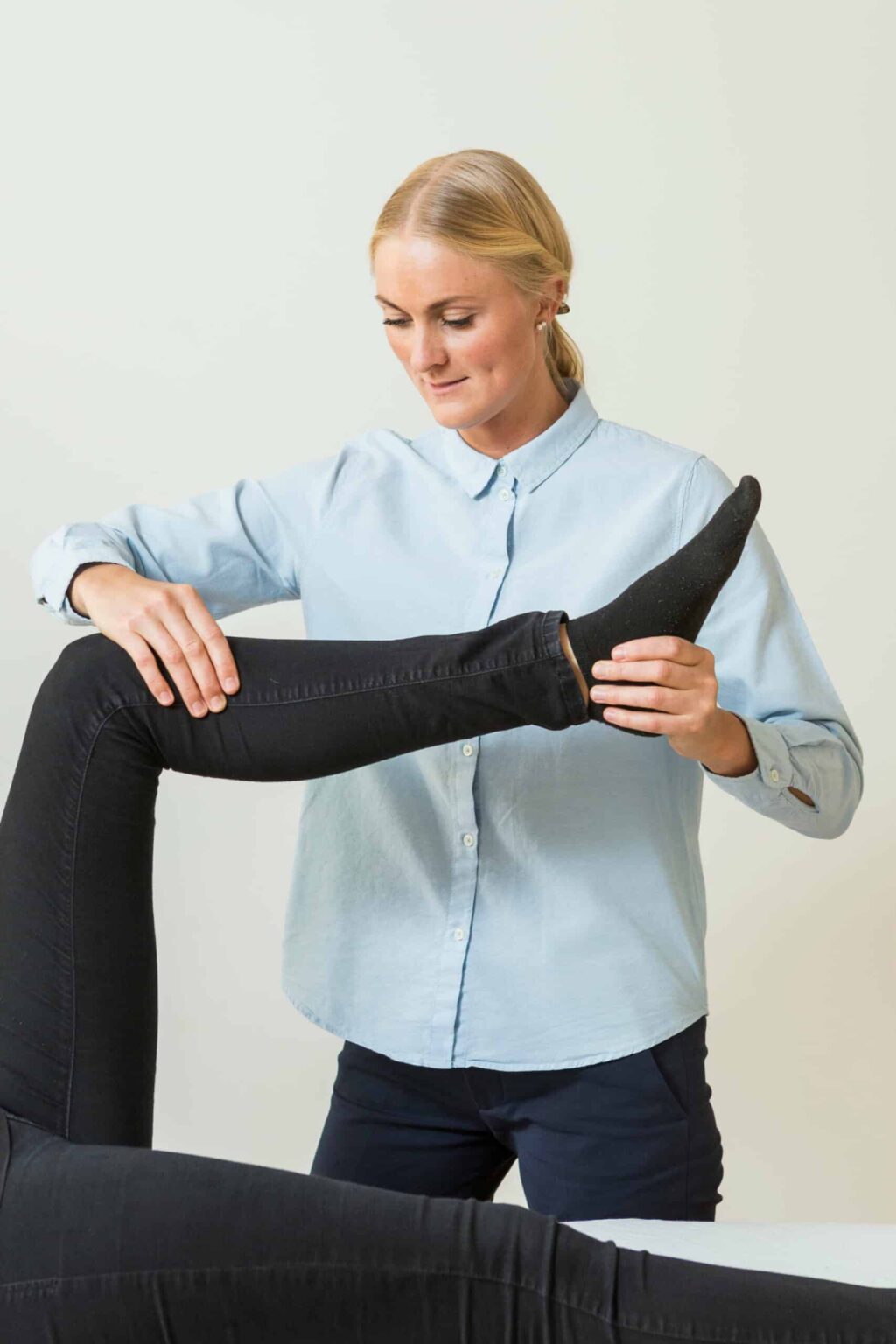
Heel spur
